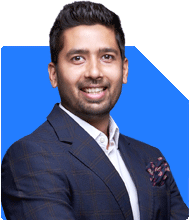Ramalingam Kalirajan |10906 Answers |Ask -Follow
Mutual Funds, Financial Planning Expert - Answered on Apr 04, 2024
He has an MBA in finance from the University of Madras and is a certified financial planner.
He is the director and chief financial planner at Holistic Investment, a Chennai-based firm that offers financial planning and wealth management advice.... more

I am 62. Have monthly pension of about 44,000/-. No liabilities. In the next 3-5 years how can I invest Rs 50,000/- in mutual fund to get a handsome amount
Consider Balanced Funds: Opt for balanced funds or hybrid funds that invest in both equity and debt instruments. These funds offer a balance between growth and stability, making them suitable for retirees seeking regular income and capital appreciation.
Dividend Yield Funds: Look for dividend yield funds that invest in stocks of companies with a track record of paying consistent dividends. These funds can provide a steady income stream through dividend payouts while offering the potential for capital appreciation.
Debt Funds: Allocate a portion of your investment to debt funds, which primarily invest in fixed-income securities such as government bonds, corporate bonds, and money market instruments. Debt funds offer stability and regular income with relatively lower risk compared to equity funds.
Systematic Withdrawal Plan (SWP): Instead of opting for a lump sum investment, consider setting up a systematic withdrawal plan (SWP) from your mutual fund investments. SWP allows you to withdraw a predetermined amount at regular intervals, providing you with a steady income stream while keeping your investment intact.
Diversification: Diversify your investment across multiple mutual fund schemes to reduce risk and enhance returns. Allocate your investment among different asset classes, including equity, debt, and hybrid funds, based on your risk tolerance and financial goals.
Regular Review: Periodically review your mutual fund investments to ensure they align with your investment objectives, risk profile, and changing market conditions. Consider rebalancing your portfolio if necessary to maintain your desired asset allocation.
Before making any investment decisions, consult with a financial advisor who can assess your financial situation, risk tolerance, and investment goals to provide personalized recommendations tailored to your needs. Additionally, consider factors such as taxation, exit loads, and fund expenses while selecting mutual fund schemes.
You may like to see similar questions and answers below
Kirtan A Shah | Answer |Ask -Follow
MF Expert, Financial Planner - Answered on Sep 22, 2023
Ramalingam Kalirajan |10906 Answers |Ask -Follow
Mutual Funds, Financial Planning Expert - Answered on May 20, 2024
Ramalingam Kalirajan |10906 Answers |Ask -Follow
Mutual Funds, Financial Planning Expert - Answered on May 21, 2024
Ramalingam Kalirajan |10906 Answers |Ask -Follow
Mutual Funds, Financial Planning Expert - Answered on Jul 03, 2024
Reetika Sharma |432 Answers |Ask -Follow
Financial Planner, MF and Insurance Expert - Answered on Sep 10, 2025
Ramalingam Kalirajan |10906 Answers |Ask -Follow
Mutual Funds, Financial Planning Expert - Answered on Dec 19, 2025
Nayagam P P |10859 Answers |Ask -Follow
Career Counsellor - Answered on Dec 19, 2025
Ramalingam Kalirajan |10906 Answers |Ask -Follow
Mutual Funds, Financial Planning Expert - Answered on Dec 19, 2025
Ramalingam Kalirajan |10906 Answers |Ask -Follow
Mutual Funds, Financial Planning Expert - Answered on Dec 19, 2025
Ramalingam Kalirajan |10906 Answers |Ask -Follow
Mutual Funds, Financial Planning Expert - Answered on Dec 19, 2025
Radheshyam Zanwar |6751 Answers |Ask -Follow
MHT-CET, IIT-JEE, NEET-UG Expert - Answered on Dec 19, 2025
Radheshyam Zanwar |6751 Answers |Ask -Follow
MHT-CET, IIT-JEE, NEET-UG Expert - Answered on Dec 19, 2025
Samraat Jadhav |2514 Answers |Ask -Follow
Stock Market Expert - Answered on Dec 18, 2025
Reetika Sharma |432 Answers |Ask -Follow
Financial Planner, MF and Insurance Expert - Answered on Dec 18, 2025
Reetika Sharma |432 Answers |Ask -Follow
Financial Planner, MF and Insurance Expert - Answered on Dec 18, 2025






















